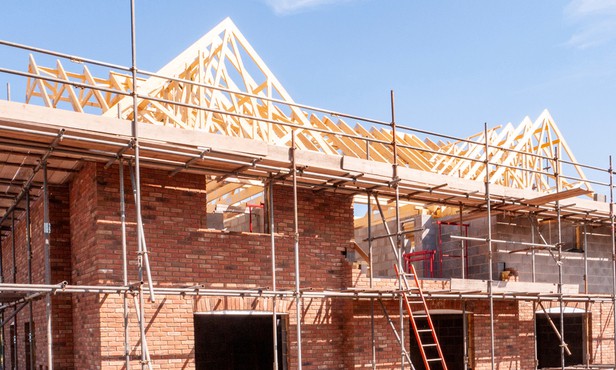The number of dwellings where building work started on-site between July to September 2020 was up 111% on the previous quarter, according to the MHCLG.

The number of dwellings where building work started on-site was 35,710 between July to September 2020 which is up 111% on the previous quarter, according to the Ministry of Housing, Communities & Local Government (MHCLG).
This is the first quarterly increase since the same quarter in 2018.
The government believe that the sharp increase reflects the relaxation of the national restrictions that were imposed during the COVID-19 pandemic.
In addition, the number of dwellings completed on site was 45,000 in July to September 2020, up 185% on a quarterly basis.
Furthermore, there were 243,770 net additional dwellings between April 2019 and March 2020, a 1% increase on the net additional dwellings created between April 2018 and March 2019.
There were 29,000 new dwelling Energy Performance Certificates lodged in England in the quarter ending June 2020.
This represents a 56% decrease compared to the same quarter last year, and a 14% decrease on the previous 12 months.
As well as this, there was a net increase of 187,230 in the number of domestic properties with a council tax band in England between September 2019 and September 2020.
This equates to a 15% decrease compared to the same period in the previous year.
Iain McKenzie, chief executive of The Guild of Property Professionals, said: “The sharp increase in the number of dwellings started and completed between July and September last year is not a reason to celebrate but a simple reflection of the country emerging from the first national lockdown.
“The negligible 1% increase in the number of net additional dwellings in the year to March 2020, before the pandemic struck, underlines the ongoing housing supply issue England is facing.
“The country's housing deficit will almost certainly have been exacerbated by the logistical and financial issues created by the pandemic.
“While the economic outlook remains highly uncertain due to both the pandemic and our official departure from the EU, the endemic lack of supply will provide a degree of support to property prices and arguably prevent a material decline.”
George Franks, co-founder of Radstock Property, added: “In the 12 months to March 2020, before the pandemic took a grip on the economy, the number of houses being built in England barely increased on the previous year.
“Until the country builds more homes more quickly, it’s hard to see property prices falling sharply, whatever happens to the economy in the months and years ahead.
“You have to feel for first time buyers, who are being priced out of the market because too few homes are being built.
“The pandemic will, of course, have made an already bad housing supply problem worse.
“For those who already own, the lack of homes being built will act as a glass floor under house prices during the turbulent months and potentially years ahead.
"The other issue facing housebuilders is that to ensure units sell they need to build where people want to live, which is where prices are least affordable.
"It's a Catch 22 Joseph Heller could have penned."



